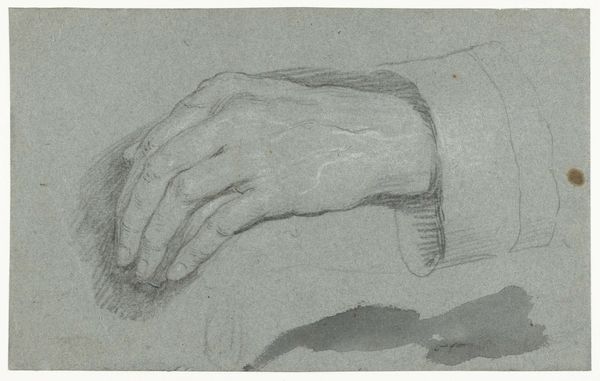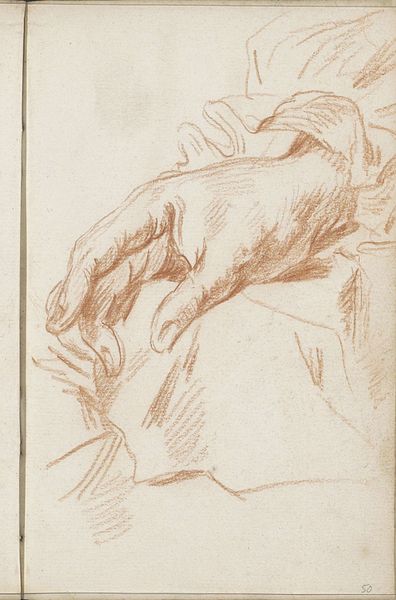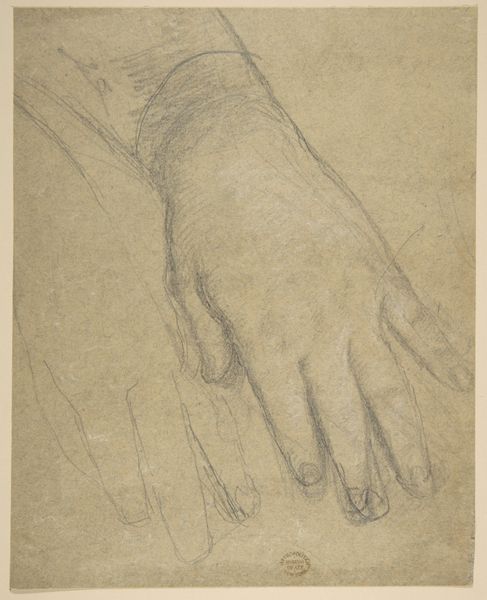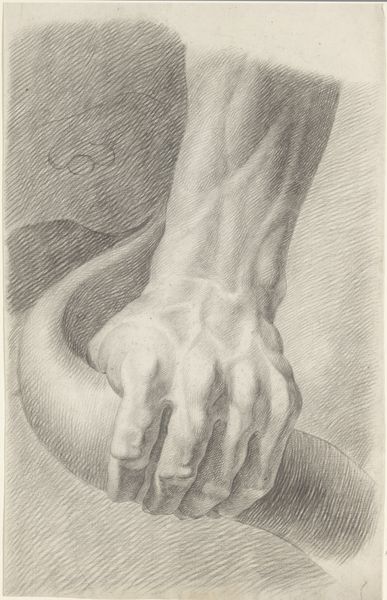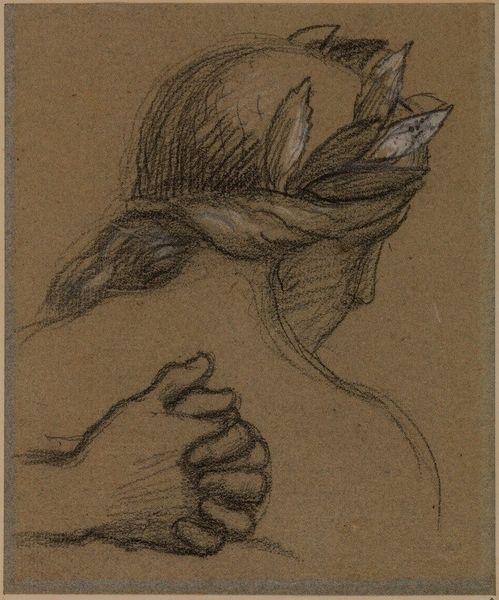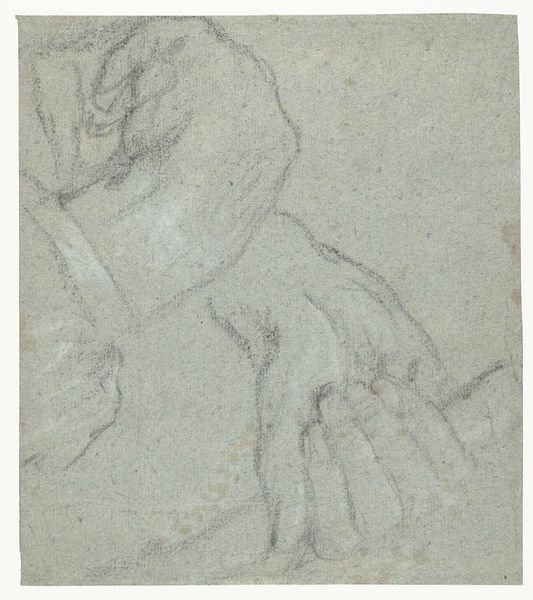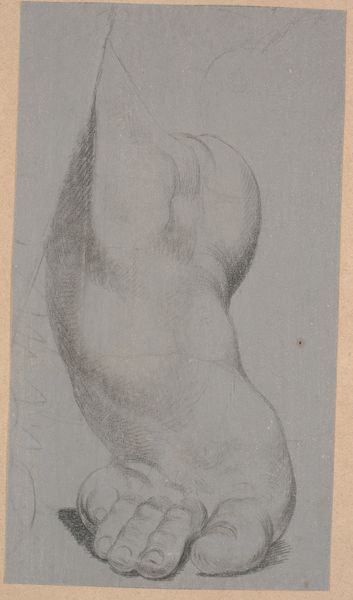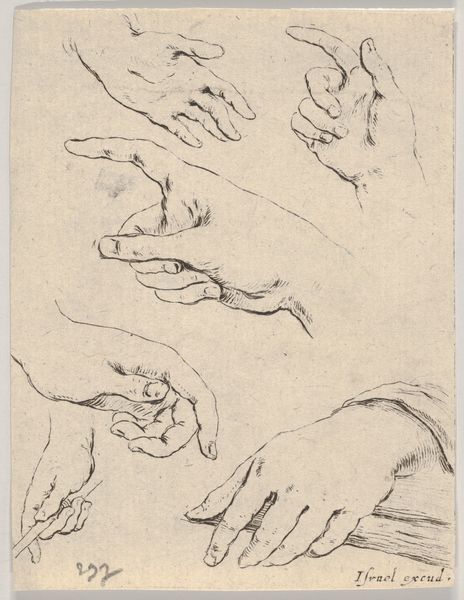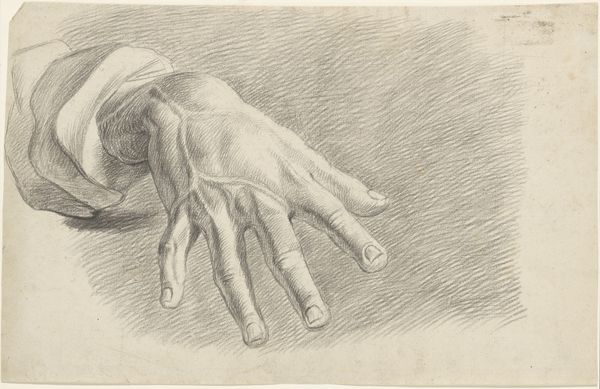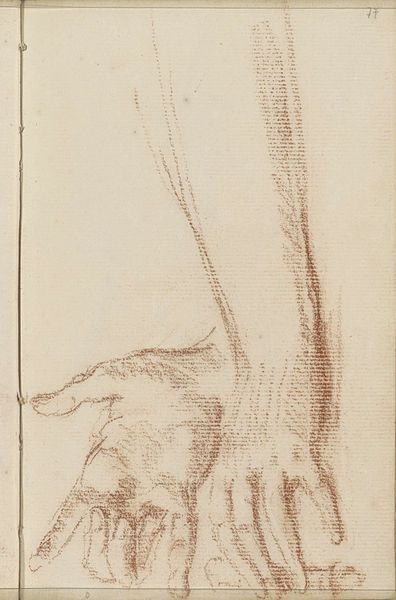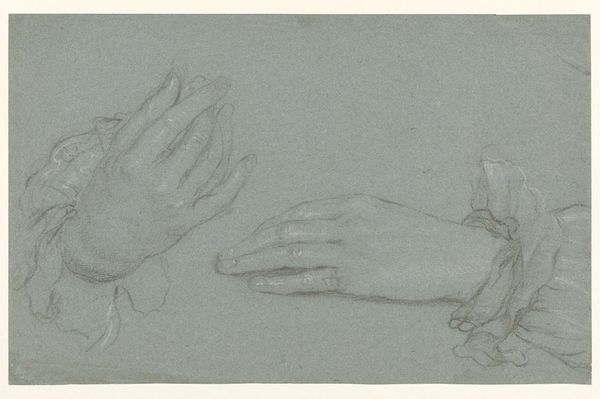
drawing, paper, pencil, chalk
#
portrait
#
drawing
#
figuration
#
paper
#
pencil
#
chalk
#
academic-art
Copyright: Public Domain
Curator: Up next is a piece entitled “Sketch of hand and foot,” rendered in chalk and pencil on paper. It is held in the collection of the Städel Museum. Editor: Well, my immediate response is a sense of vulnerability. There's a quiet intimacy in the juxtaposition of these two forms, isolated on the page. The hand, with its delicate, almost imploring gesture, resting near the starkly presented foot... Curator: Precisely. The stark tonal contrast, achieved through subtle gradations of the chalk, defines volume while creating a rather dynamic relationship between the figures. The academic nature of this piece implies the body as subject. It's an inquiry into form. Editor: Of course, this artistic study occurs in the late 18th, early 19th century when depicting figures was to re-present ideals of the body – of whiteness. What class, or rank does that body signify? How does the piece embody assumptions about perfection? Curator: I'd agree. Yet, observe the interplay of light and shadow – particularly in the way the artist captures the bone structure and musculature. Lampi directs our view from a series of tightly focused cross-contour lines into an expansive vista of blending that give it weight, not merely volume. The rendering emphasizes texture and shape – a symphony of lines, if you will, all harmonizing to give form to a fleeting gesture. Editor: And that's exactly where social and aesthetic value meet. Art of this period circulated among private salons and elite society and it shaped views. I wonder, too, how access and circulation affected how the public perceived certain subjects – especially race and the body. The artist decides whose hands and feet receive attention, are elevated into ‘fine art,’ and immortalized in museums. Curator: I see your point; access certainly dictated perspective. Nevertheless, it would be reductive not to acknowledge how meticulously constructed these depictions are; the drawing exemplifies classical artistic practice. Its academic origins speak volumes about canon formation, establishing what is and isn’t seen as beautiful, or worthy. Editor: A crucial point! Art becomes an emblem, a marker. Reflecting on Lampi’s hand and foot, I’m reminded again how powerfully artworks reinforce cultural beliefs about whose body matters. Curator: Indeed. It provides us, the viewer, with space to reconsider.
Comments
No comments
Be the first to comment and join the conversation on the ultimate creative platform.
